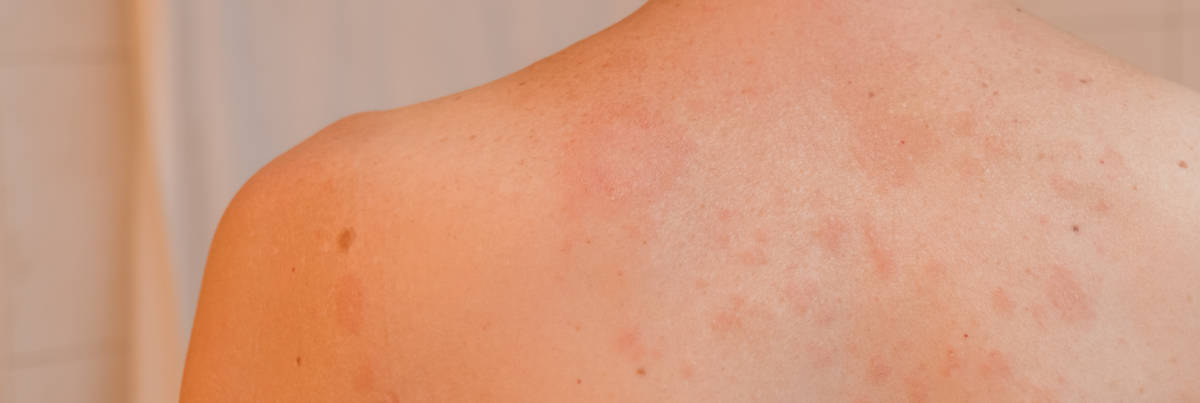No ma tter how hard you squint, you just can’t tell what that thing is on your skin. The only thing you know is that it’s definitely not supposed to be there. So how can you tell if it’s just a rash or something more seriously, like actinic keratosis?
tter how hard you squint, you just can’t tell what that thing is on your skin. The only thing you know is that it’s definitely not supposed to be there. So how can you tell if it’s just a rash or something more seriously, like actinic keratosis?
First, you need to look at it…hard. A rash is usually a temporary reaction by the protective layer of the skin to a substance to which you are allergic. These reactions are usually associated with redness, general inflammation, and itching. Actinic keratosis (“AK”) is a pre-cancerous growth that manifests as white scaly, rough patches on the skins that is caused by years of sun exposure. This chronic skin disease usually affects old adults (ages 40+) and forms skin lesions that have the ability to develop into skin cancer. For most rashes, over-the-counter topical analgesics and cleansers will do the trick and the rash will disappear within a couple of weeks. Rashes can become more complicated depending on how the patient treats the affected area, like if excessive itching breaks the skin open, which can develop into bleeding, oozing, and scabbing. But, this is a condition that will resolved on its own without being particularly linked with additional disease. Some cases of AK do not need aggressive treatment, but AK will not resolve on its own. If you have spent a lot of your life out in the sun and are suspicious of something new on your skin that had appeared on your face, ears, neck, scalp, chest, hands, forearms, or lips, keep reading.
Next, you need to have a medical professional look at it, especially if you cannot tell the difference or if you have had issues with your skin before. AK needs more in-depth treatment and monitoring after the fact. When your dermatologist or primary care provider diagnoses AK, the medical provider will likely look for and suggest excision of any lesions present. Not all of the keratosis patch will need to be removed, but your provider will decide which lesions need to be removed based on the lesion type, age, and the patient’s health. There are several options, so do not panic about going “under the knife”. Several options exist that can remove the growth. With cryosurgery, the medical professional applies liquid nitrogen to the area and freezes the lesion off. Chemical peels and new topical creams have become more commonly used for areas that are populated with a greater number of lesions. Chemical peels use acids to remove the top layers of skin; topical applications such as imiquimod and 5-fluorouracil, and Solaraze all are used as part of a multi-week regime that slowly breaks down the keratosis. If you have individual lesions that need to be removed immediately or are highly suggestive of cancer, your medical provider will likely suggest curettage or excision. Curettage involved scrapes the lesion, takes a biopsy, and seals the wound with heat or acid.
If you have any concern over any skin condition, be sure to get it checked out by a dermatologist. Early detection is always better for your health, so do not be afraid to reach out to a specialist. A dermatologist like Dr. Guenthner has dedicated his life to keeping healthy by helping them feel and look their best.
Dr. Guenthner services Carmel, Danville, West Lafayette, Lafayette and Franklin along with many other cities around the State. The Dermatology Center is ready to help you with any dermatology needs.
Disclaim: This blog provides general information and discussion about medical, cosmetic, mohs, and surgical dermatology. The words and other content provided in this blog, and in any linked materials, are not intended and should not be construed as medical advice. If the reader or any other person has a medical concern, he or she should consult with an appropriately-licensed dermatologist or other health care worker.